(3) In the fieldwork that I carried out from August 2003 to February 2004, I participated in rituals of several tariqas and conducted a number of interviews with their members. For example, the Jaziliya-Shaziliya order can be characterized as follows: it has an effective system for organizing religious practices; and activities in rituals are done reasonably and efficiently. The activities of the order are guided by the shaykh, and in practice are managed by members who are loyal to the order. On the other hand, however, "emotional worship" springing from the enthusiastic worship of the person of the shaykh can be discerned. Such expressions of worship are restrained or controlled in other tariqas that also manage their organizations efficiently. However, "emotional worship" reinforces the absolute power of the shaykh. The modern western viewpoint, generally speaking, calls for a "reason" whose characteristics are clarity and calculability. From this perspective, "emotional worship" and efficiency are two incompatible qualities, but in fact they coexist in this tariqa. This is made possible by the substantial existence of the shaykh, who is the director of both the religious practices of the members and the rational management of the organization. Another contradiction in this tariqa can be discerned from a modern western viewpoint. The members perceive their shaykh primarily as a superior being, but at the same time treat him as a father or friend in whom they can express closeness and respect. These two contradictory qualities merge together in the shaykh, and this makes the Jaziliya order a unique form of tariqa. In this respect, the shaykh becomes the nucleus of this tariqa. Other similar "new" tariqas, however, do not necessarily share this characteristic, and neither does "emotional worship" always work to maintain order in them. For example, the Tijaniya order, whose organizational innovativeness is also well known, maintains its rationality and efficiency through strict regulations, formalistic religious practices, and replaceable shaykhs. In some cases, however, this ceases to function when some of the members direct their "emotional worship" to a particular shaykh within the group. In one case, an emerging charismatic shaykh threatened the position of the founder of the order. Here, "emotional worship" to a particular shaykh works to weaken, or even dissolve, the structure of the order, and in this sense stands in contrast to the Jaziliya order. Although many "new" tariqas manage their organizations in innovative ways, there are differences between them. Thus, the key to gaining further understanding of new tariqas is to seek the internal logic used to maintain the "order"; or in other words, how the organization is reconciled as a collective entity with individualistic religious practices. |
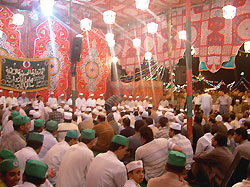
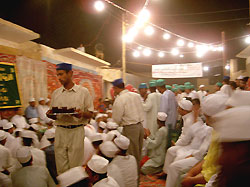
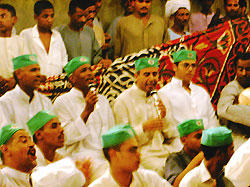
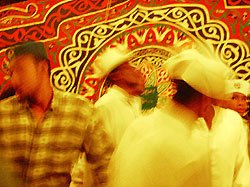
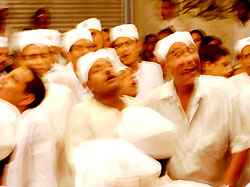
 21st Century COE Program
-Aiming for COE of Integrated Area Studies-
21st Century COE Program
-Aiming for COE of Integrated Area Studies-